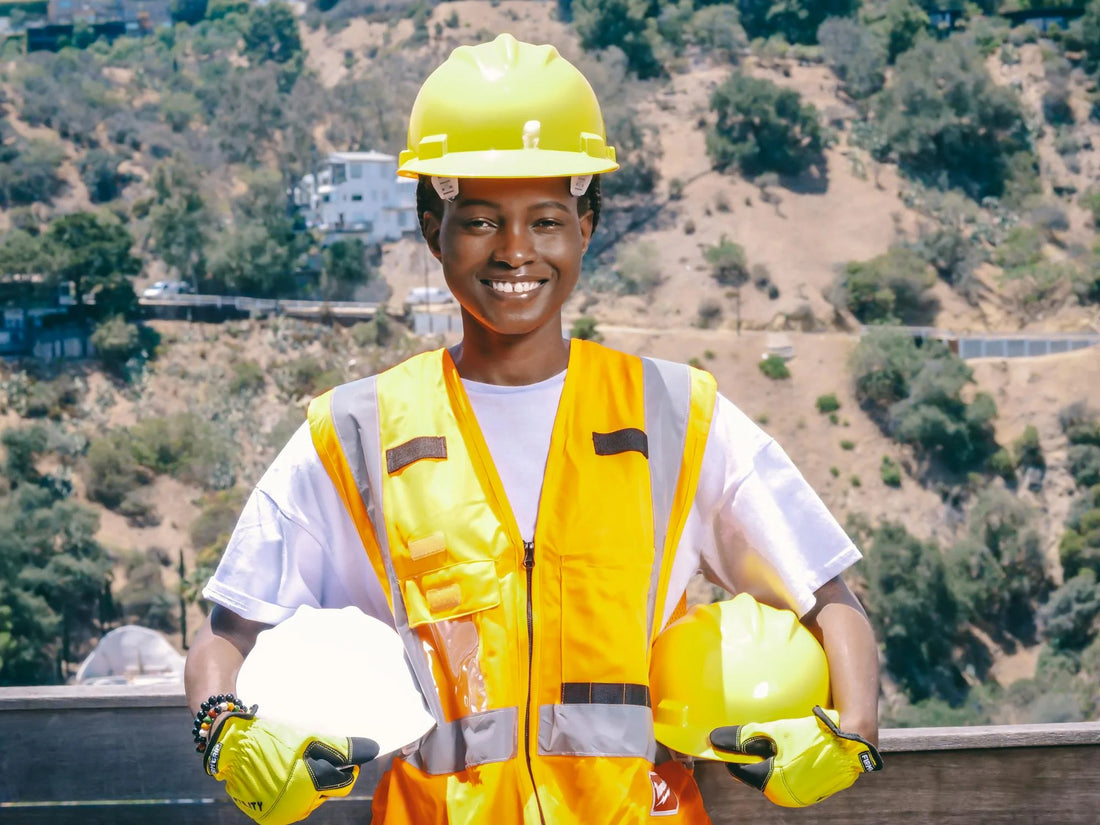
How to Choose the Right Personal Protective Equipment (PPE) for Your Jobsite: A Comprehensive Guide to Keeping Workers Safe
The Crucial Role of Personal Protective Equipment (PPE) on Job Sites
The construction industry is a dynamic and essential sector, but it also presents inherent risks. From heavy machinery and hazardous materials to the ever-present danger of working at heights, job sites demand a high level of vigilance to ensure worker safety. Personal protective equipment (PPE), acting as a vital barrier between workers and potential hazards, plays a crucial role in minimizing these risks. Choosing the right PPE is not just a matter of compliance with regulations; it's about making a conscious effort to create a culture of safety that prioritizes the well-being of every worker.
Beyond Compliance: Understanding the Importance of PPE
While complying with safety regulations is essential, the concept of PPE goes beyond simply meeting legal requirements. It's about creating a culture of safety where every worker feels empowered and protected. When you invest in the right PPE, you are sending a clear message: 'We care about your safety, and we are committed to providing you with the tools and resources to do your job safely.' This fosters a sense of trust and accountability that is essential for a positive and productive work environment.
Key Factors to Consider When Choosing PPE
Selecting the right PPE involves a thoughtful process that considers a variety of factors, including:
- The Specific Hazards Present: The first and most critical step is to identify the specific hazards your team faces. Are they working with chemicals, handling heavy objects, working with power tools, operating machinery, or working at heights? Each jobsite presents unique challenges, and understanding the potential risks is crucial for selecting the right PPE.
- Job Requirements and Tasks: Consider the nature of the job tasks. Do they involve prolonged standing, lifting heavy loads, working in confined spaces, or operating complex equipment? The demands of the job will influence the types of PPE required for optimal comfort, support, and protection.
- Industry Standards and Regulations: Compliance with industry standards and regulations is paramount for worker safety. Familiarize yourself with relevant OSHA regulations and ensure that your PPE meets the necessary requirements. This ensures that your team is protected by a framework of established safety protocols.
- Comfort and Fit: PPE should fit comfortably and securely to be effective. If equipment feels uncomfortable or restrictive, it's less likely to be worn consistently. Ensure that workers have the correct sizes and have the opportunity to try on different items for a proper fit. A proper fit ensures maximum protection and minimizes distractions while working.
- Training and Education: It's not enough to simply provide PPE. Workers need proper training on how to use and maintain it correctly. This ensures that they understand the importance of PPE and how to use it effectively to minimize risks. Training should cover topics such as proper fit, inspection procedures, maintenance routines, and emergency protocols for using the specific equipment.
Essential PPE for Your Jobsite: A Comprehensive Overview
Now, let's explore some essential types of PPE that can be tailored to specific jobsite needs:
Respiratory Protection: Safeguarding Workers from Airborne Hazards
For tasks involving airborne particles, dust, fumes, or other hazardous substances, a respirator is essential. The KIMBERLY-CLARK NIOSH N-95 RESPIRATOR (50) provides reliable protection against airborne particles as small as 0.3 microns, filtering out at least 95% of these particles. This respirator is NIOSH-certified and features a pouch-style design for maximum comfort, with a large breathing chamber to minimize breathing resistance. The adjustable nosepiece and headband ensure a secure, customized fit, maximizing the effectiveness of the respirator.

When selecting respirators, always consider the specific hazards present and choose the appropriate type of respirator based on the level of protection required. Regular maintenance and proper training on respirator use are crucial to ensuring their effectiveness.
Slip and Fall Prevention: Creating a Safer Work Surface
Slips and falls are a common cause of injuries on jobsites, especially in areas where surfaces may be wet, oily, or uneven. These accidents can result in a range of injuries, from minor sprains to serious fractures. Placing Caution Mat Pads in strategic locations can significantly reduce the risk of these accidents.

These mat pads feature highly visible caution markings to alert workers of potential hazards, ensuring that they are aware of slippery surfaces. Their durable, slip-resistant construction can withstand heavy foot traffic and frequent cleaning, making them a long-lasting and effective safety measure. These mats absorb moisture and minor spills, creating a safer surface while also helping to keep surrounding areas dry and clean. They are an excellent solution for areas near exits, entrances, work stations, and any locations where potential slip hazards may exist.
Foot Protection: Shielding Workers from Potential Hazards
Jobs that involve heavy objects, potential hazards, or prolonged standing require sturdy footwear that provides both protection and comfort. The HIP BOOTS-STEEL TOE is an excellent choice for these situations.

These boots feature a steel toe and shank, providing protection against impact and compression hazards. They are also equipped with a cotton lining for comfort, ribbed soles for improved traction, and adjustable straps fora secure fit. The hip-height design offers additional protection and support, especially in environments where workers may encounter splashes or debris. These boots are ideal for a variety of trades, including construction, landscaping, agriculture, and industrial settings where foot protection is critical.
Fall Protection: Ensuring Safety When Working at Heights
Working at heights comes with significant fall risks. Falls from heights are one of the leading causes of serious injuries and fatalities in the construction industry. The Titan II Non-Stretch Harness is a reliable solution for fall protection, ensuring worker safety when working at elevated locations.

This harness features a comfortable, adjustable design that meets ANSI standards for fall protection. The non-stretch construction ensures a secure fit and minimizes the risk of a worker falling through the harness in the event of an accident. It also includes a shock-absorbing lanyard that helps to dissipate the force of a fall, further protecting the worker from serious injury. This harness is essential for workers who are involved in tasks such as roof work, scaffold installation, and other activities that require working at heights.
Making Informed PPE Choices: A Summary of Key Considerations
Selecting the appropriate PPE is an essential step in building a safe and productive jobsite. By considering the hazards, job requirements, industry standards, comfort and fit, and providing proper training, you can make informed choices about the equipment that will best protect your workers. Remember, the right PPE not only minimizes the risk of injury but also fosters a culture of safety that benefits your entire team. A proactive approach to PPE selection, combined with ongoing training and maintenance, is crucial for creating a work environment where safety is paramount.
Sources:
